Huéscar home of the first hominids in Europe and at war with Denmark for 172 years
By Nick Nutter | Updated 7 Jun 2022 | Granada | Villages |
Login to add to YOUR Favourites or Read Later
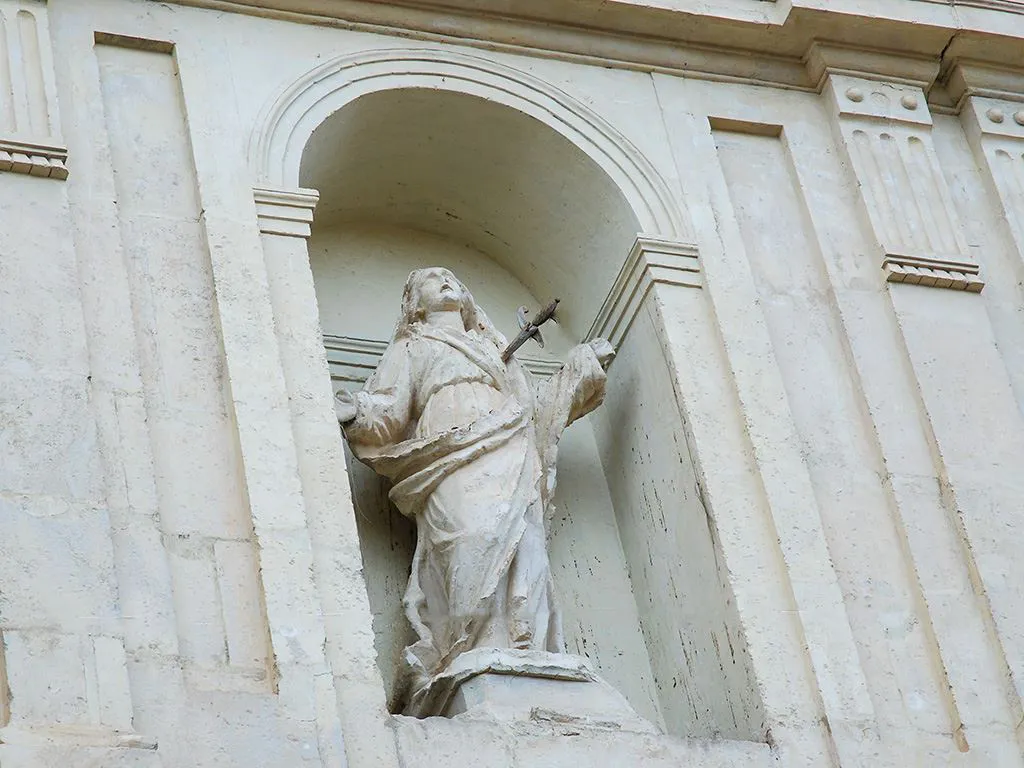
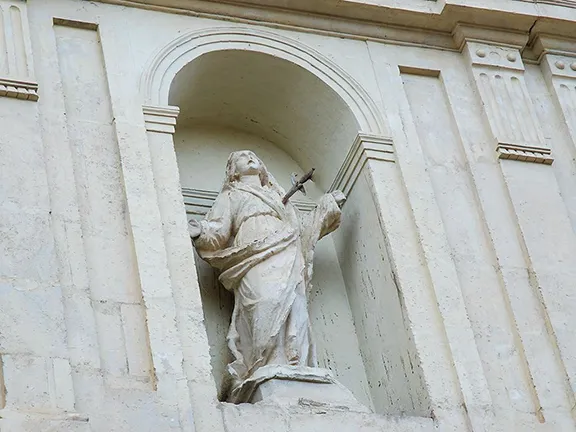
Saint Maria
On the 11th November 1809 the citizens of a small town in Granada, outraged at Denmark’s alliance with Napoleon during the Napoleonic Wars, declared war on Denmark. The war was to last 172 years, the peace treaty being signed on the 11th November 1981. Intrigued by this irrelevant fact Julie and I went to Huéscar. Although not the prettiest of towns in Andalucia, a visit to Huéscar raises more questions than it provides answers, an intriguing place.
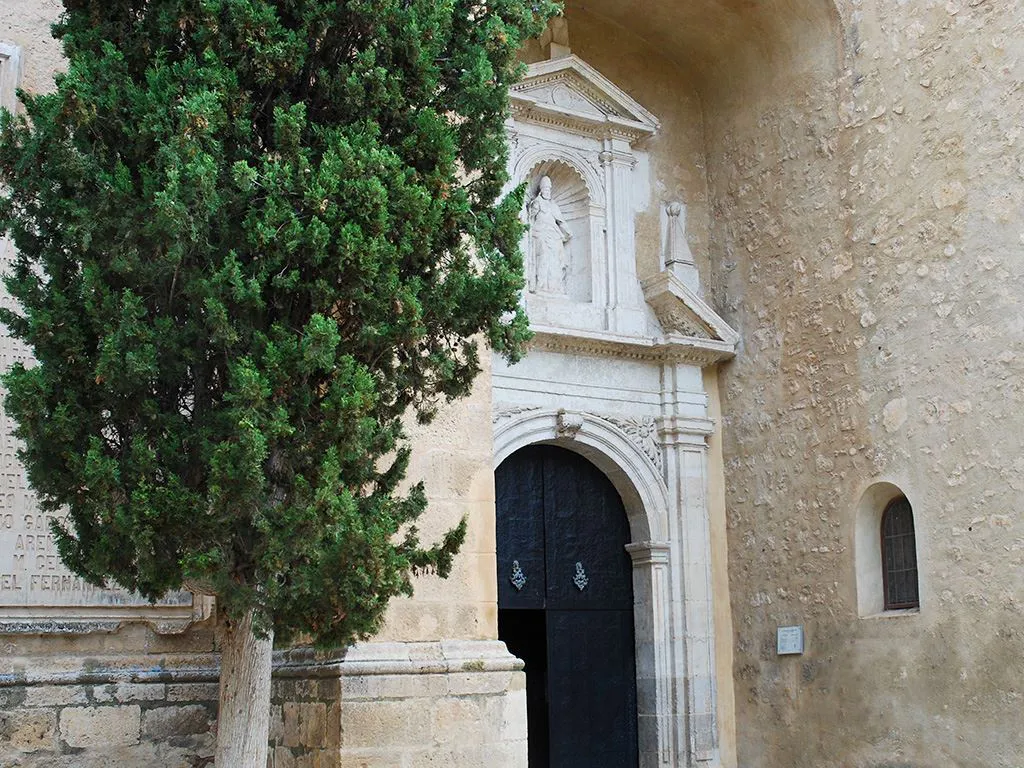
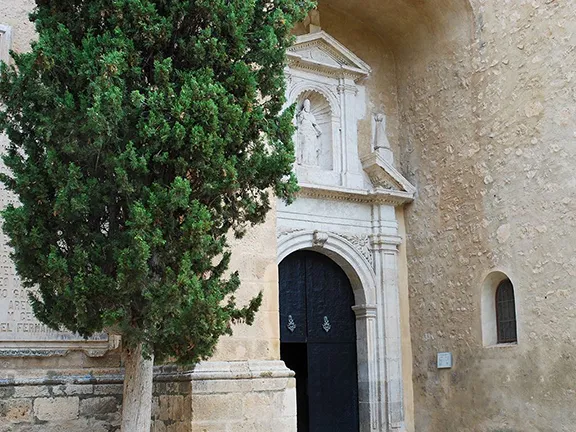
Parroquia Mayor de Santa María de La Encarnación Huescar
Sun faded signs at the municipality boundaries proudly declare Huéscar to be the home of the first hominids in Europe. Now what is that all about?
In the summer of 1982, three palaeontologists from the Institut de Paleontologia de Sabadell in Catalonia, Josep Gilbert, Jordi Agusti and Salvador Moyà-Solà, working at the Venta Micena archaeological site at Orce in the municipality of Huescar, discovered a fragment of skull. In July 1983, it was announced at a press conference that the fragment was human and 1.4 million years old, making it, at that time, the oldest proof of humans in Europe. Unfortunately, a large proportion of the scientific community did not agree, arguing that the skull fragment was equine. The argument, human – equine, has bounced backwards and forwards ever since and to date (May 2021), the matter is still unresolved. I predict this conflict will last at least as long as the Huéscar – Danish War.
Julie, taking a more prosaic view, pointed out that, even if there were humans in Huéscar 1.4 million years ago they were not just plonked there, they had to have travelled from somewhere else so the home of the first hominids in Europe was likely to have been somewhere on the border between Europe and Asia. I cannot argue with that.
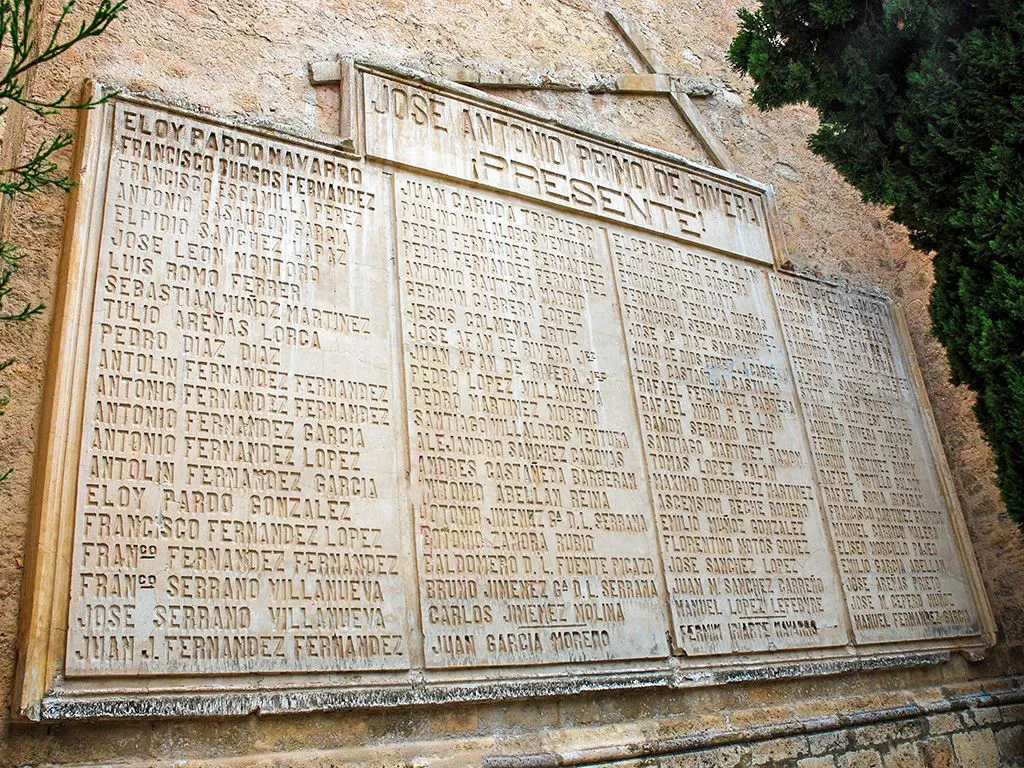
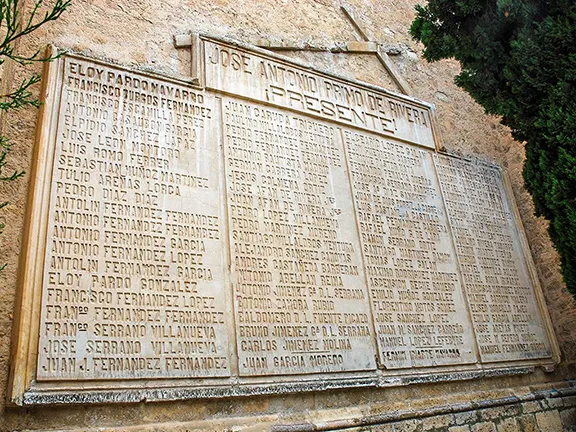
José Antonio Primo de Rivera ¡Presente!
Now this one had me puzzled for a while. On the side of the rather grand Church of Santa María is a large plaque with the words ‘Jose Antonio Primo de Rivera ¡Presente!’ followed by four columns containing 85 names.
José Antonio Primo de Rivera was the eldest son of General Miguel Primo de Rivera, who governed Spain as dictator from 1923 to 1930. José was a well-educated, erudite lawyer who, in 1933, founded the Falange Española, a fascist political party that later became the Falange Española de las JONS. The charismatic Rivera became the messianic leader of the party.
Unlike the leaders of the Italian Fascist party, on which the Falange Española was modelled, or the equally left wing National Socialist German Workers' Party, Rivera only reluctantly accepted the fascist adage that a doctrine of violence was required to bring about revolutionary change.
In March 1936 José was arrested for illegal possession of a firearm and later brought to trial on trumped up charges of conspiracy against the Republic and military insurrection. At the time of his arrest a Socialist coalition of anarchists, communists, socialists, liberal republicans and other radicals had been elected to office in elections held the previous month. Franco, the Chief of Army Staff and a prominent Nationalist figure before the elections, had been relegated to the Canary Islands from where he engineered the military coup of July 1936. It is possible that Franco considered José Antonio Primo de Rivera a rival for the leadership of the Nationalistic party. In any case, Rivera was brough to trial in November 1936, sentenced to death and faced a firing squad in Alicante on the 20th November 1936.
Back to the plaque on the side of the church. After his death Rivera became a martyr amongst the Falangist rank and file despite his death being kept a secret for two years. The Falange party merged with the Nationalists in 1937 and became the ascendent party within the Nationalist movement. By this time Rivera was dubbed "El Ausente" (The Missing One). The Falangists had a ritual that included a roll call of their comrades that had been killed in action. As each name was called the gathering would shout ‘Presente’. José Antonio’s name was always the first called. Following the war many churches throughout Spain erected funeral plaques that recorded the names of the Nationalist dead from the relevant municipality. José Antonio Primo de Rivera headed the list. The 85 names below are the Nationalist members of Huéscar killed between 1936 and 1939.
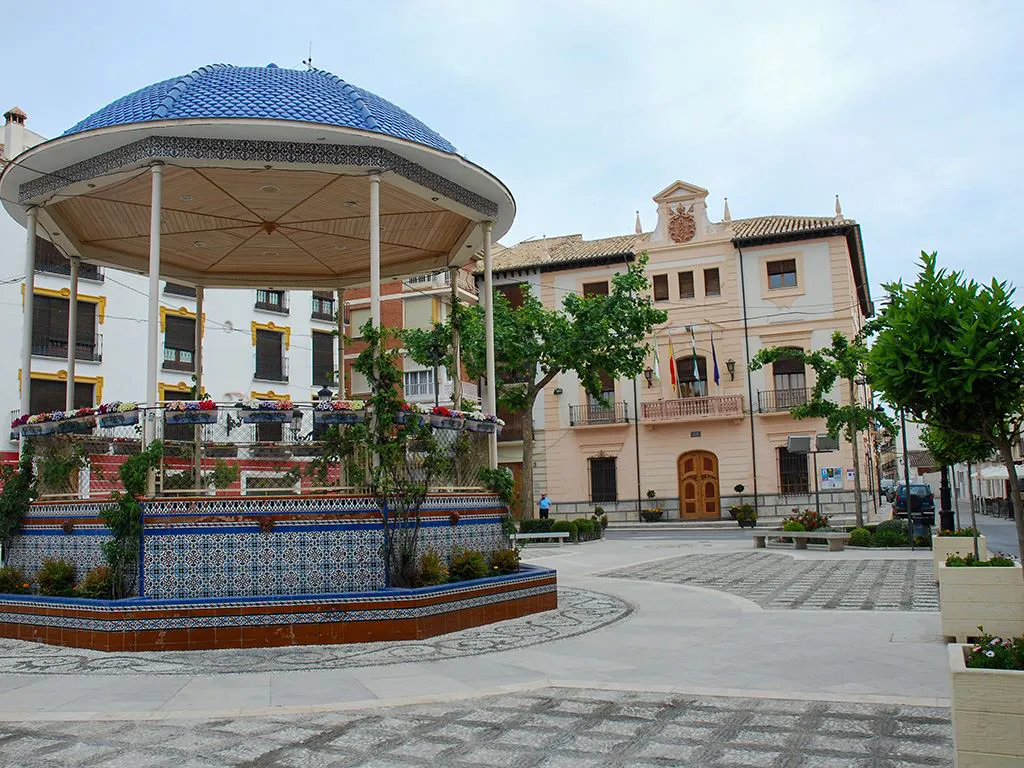
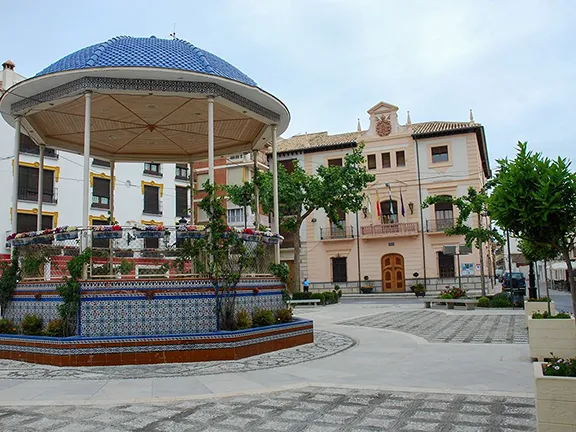
Huescar
After gathering all that information about José Antonio Primo de Rivera, I presumptuously assumed that the José de Huéscar Museum would be commemorating this notable figure. I was spectacularly wrong.
The José de Huéscar Museum is named after another José, José Antonio de Huéscar whose only connection with the town is the coincidence of names. José Antonio de Huéscar was a Spanish born cartoonist and illustrator who worked for the Franco-Belgian comic strip cartoon, a renowned cartoon publisher with titles that include the Asterix series. On his death in 2007, his entire collection of works was donated to the town of Huéscar.
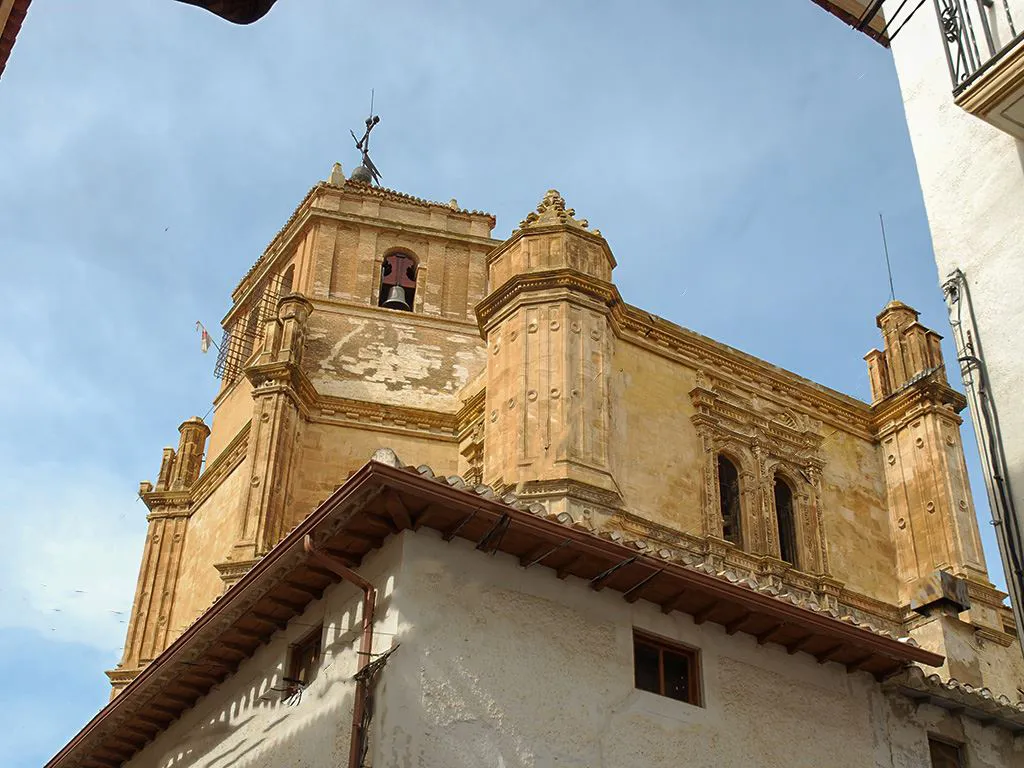
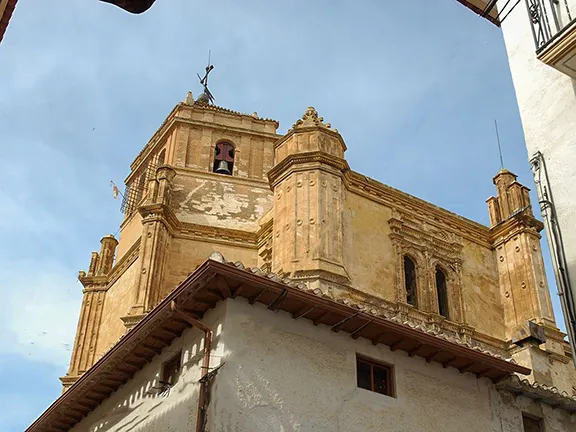
Parroquia Mayor de Santa María de La Encarnación Huescar
Follow the signs to Arte Rupestre, Piedra del Letrero, that take you north out of Huéscar. Ignore the ‘Carratera Cerrado’ sign and continue for 12 kilometres. The valley is stunningly beautiful with a couple of recreation areas and a few signposted walks. Eventually you will arrive at a fenced off enclosure that contains a rock shelter.
Since ancient times the locals believed that the paintings in the rock shelter were made from the blood of the holy martyrs, Alodia and Nunilón. Rediscovered in the early 20th century, the schematic rock art, is now attributed to the Neolithic people that inhabited this valley. The paintings are of humans, stars and animals and are a rare feature in the Granada Altiplano. Unfortunately, the shelter is securely locked with no entry days or times displayed, despite the Andalucia.org website stating it is a free admission site. This could be due to previous visitors enhancing the paintings with water and even Coca Cola, that works well but is highly corrosive. The rock shelter was declared a UNESCO World Heritage Site in 1998.
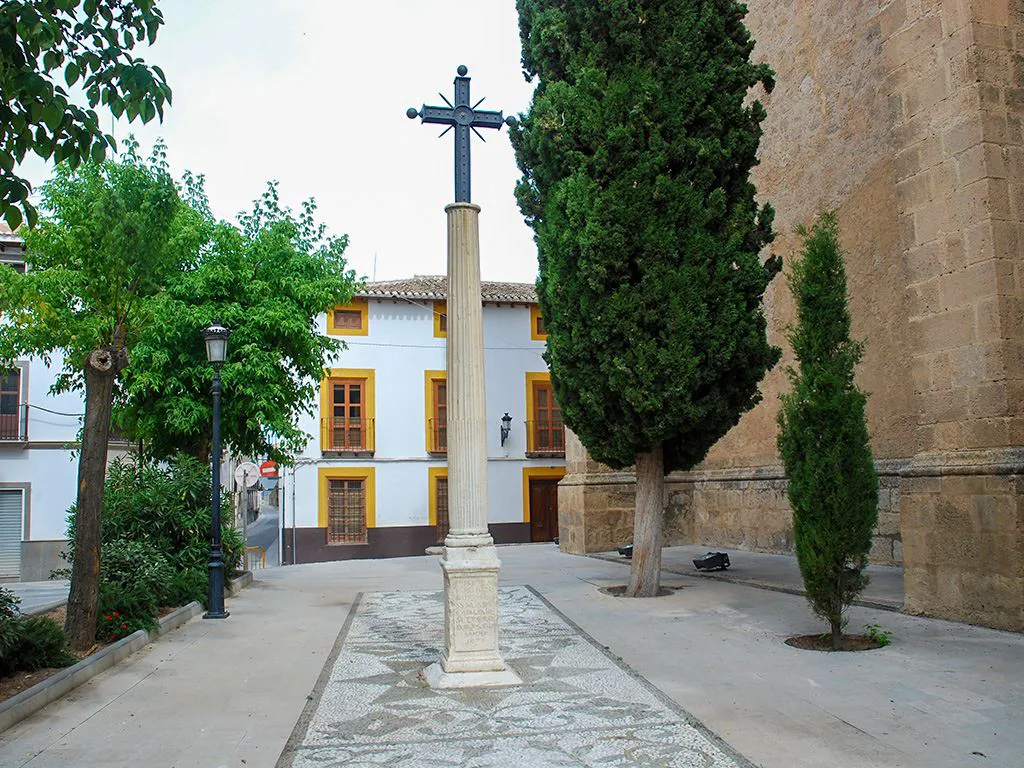
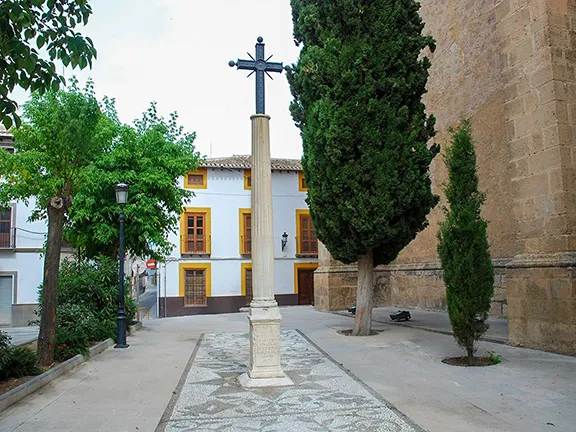
Before you leave Huéscar, find a restaurant serving Cordero Segureña. The chops, leg or shoulder, normally served with chips but traditionally served with the potatoes on which the lamb was roasted, are succulent and sweet. The Segureña is a breed of sheep that is adapted to life in the Sierras de Segura. The harsh conditions produce an animal with a distinctive flavour. So distinctive that, in 2008, the breed was awarded a D.O. certificate. The Protected Geography Indication 'Cordero de las Sierras de Segura y la Sagra' is only for lambs of the Segureña breed that are produced in 144 municipalities in the provinces of Granada, Murcia, Albacete, Jaén and Almería. There are about 600 families in the Huéscar municipality producing 200,000 lambs each year worth more than 20 million Euros so do not expect your meal to be cheap but the taste is more than worth the expense.
The final conundrum in Huéscar is again associated with the church. Above the José Antonio Primo de Rivera plaque is the statue of a female with a sword protruding from her breast.
Easily the most conspicuous building in Huéscar, the Parroquia Mayor de Santa María de La Encarnación is a 16th century Gothic-Renaissance building. It was originally conceived as a cathedral and its imposing façade houses a suitably impressive and ornate interior. It has been declared one of the seven wonders of Granada.
In 2009, Pope Benedict XVI named the Iglesia de Santa María la Mayor de Huéscar Templo Jubilar Perpetuo, equal to the Papal Basilica of Santa María La Mayor in Rome. It became the first church of the Diocese of Guadix to have an affiliation with a Pontifical basilica.
The church is named after Santa María de La Encarnación, a French nun who founded the first convent of Discalced Carmelites.
So far, so good, except Santa María de La Encarnación died peacefully in 1618. She certainly did not meet her end with a sword or dagger.
As far as I can ascertain, the only figure in Catholic lore that is portrayed like the statue above the door of the church in Huéscar is another Saint Maria, and this is her story.
Maria Teresa Goretti was born in 1890 in Italy. At the age of eleven she was killed by Alessandro Serenelli who stabbed her several times with a dagger during an attempted rape. Her beatification occurred in 1947 and her canonization as a saint in 1950 after her three brothers claimed to have witnessed the requisite three miracles. Angelo heard her voice advising him to emigrate to America. Alessandro miraculously discovered a sum of money that allowed him to leave Italy and join his brother in America. The third brother, Mariano, claimed that, whilst serving in the trenches during World War I, Maria spoke to him and told him to stay in his trench when the rest of his company charged the German line. Mariano was the only survivor of the attack that day and went on to live until 1975.
It seems as if the good people of Huéscar have adopted a second enigmatic figure.
For those wondering what happened to Alessandro Serenelli. He was sentenced to thirty years imprisonment. On his release he visited Maria’s mother, Assunta, and begged forgiveness. He reportedly prayed to Maria every day and called her his ‘little saint’. In 1950 Alessandro attended Maria’s canonization and later became a lay brother of the Order of Friars Minor Capuchin, living in a monastery and working as its receptionist and gardener until he died in 1970.